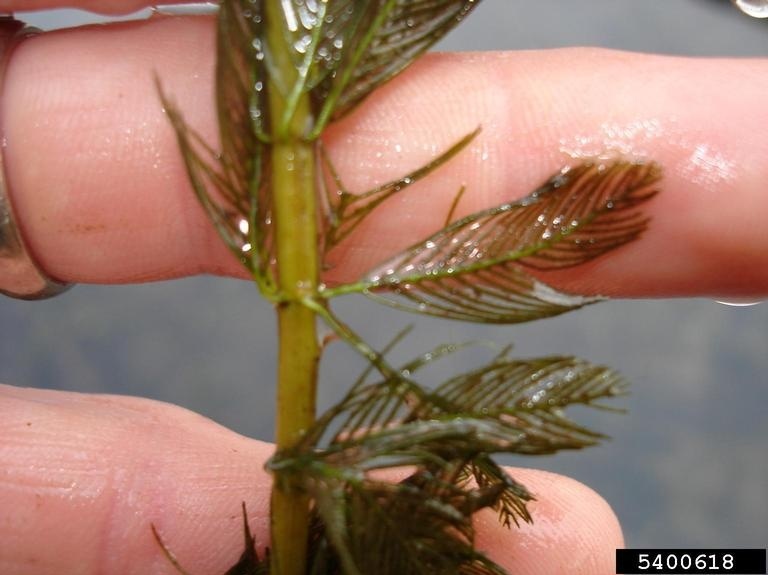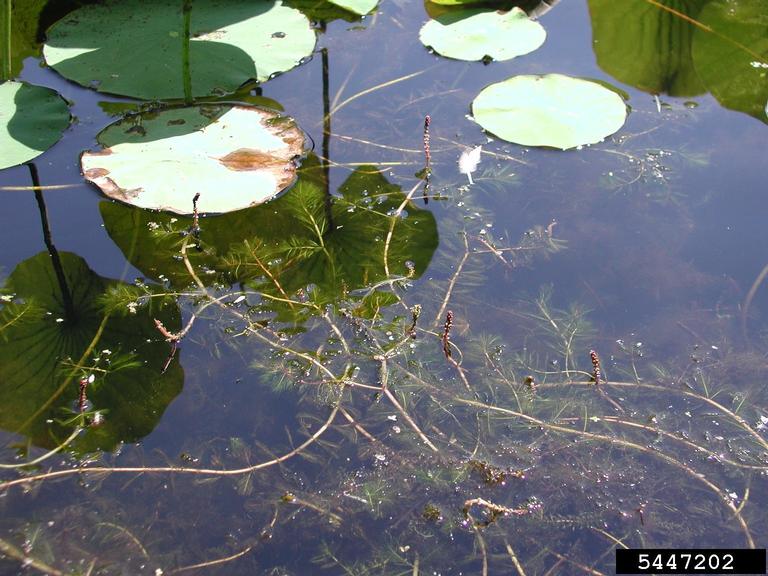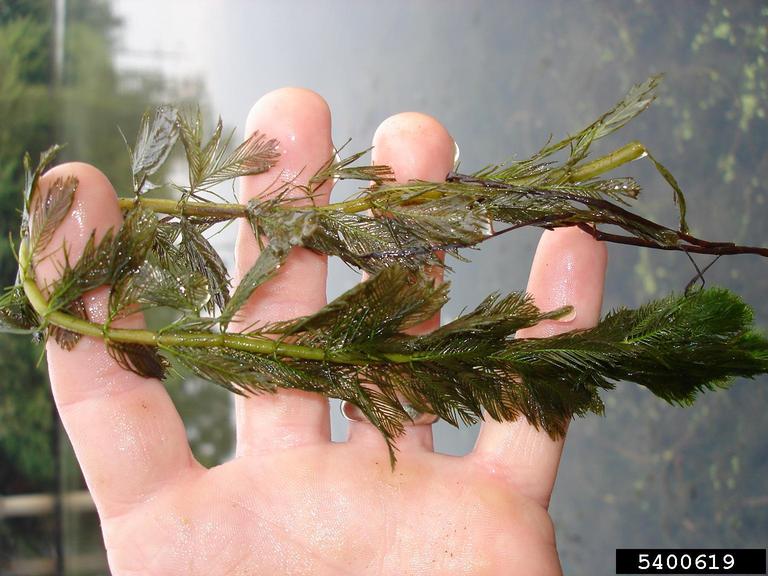Eurasian watermilfoil (EWM) is native to Europe and Asia. It was discovered in the eastern United States in the early 1900s. The species was likely introduced and spread through the movement of watercraft and water-related equipment. In Minnesota, it was first recorded in Lake Minnetonka (Hennepin County) in 1987. In 1989 the CLPO began a project through the Clearwater River Watershed District to address the growing problem. Field reports showed that in a very short time dense mats were forming such that people could not boat through the mats with their fishing boats. Annual treatments were conducted for many years by volunteers, and then in 2016 CLPO began contracting for the treatments. EWM continues to grow but it has diminished in severity and in some intervening years there has been insufficient EWM found to warrant treatment.
Eurasian watermilfoil is a perennial plant that flowers twice a year, usually in mid-June and late-July. It can grow up to 20 feet tall, but typically only grows three to nine feet tall. It creates canopy-like structures as it grows toward the water’s surface. It primarily establishes through vegetative fragmentation—a fragment can break off, settle in the sediment, grow roots, and establish a new plant. The plant dies back in the fall, but the root system can survive the winter and begin growing again in the spring.
Eurasian watermilfoil spreads rapidly and displaces beneficial native plant life. It makes swimming difficult and can devalue waterfront property. Where this species grows in its native environment, insects and fish may feed on this plant at such a rate as to control its growth. EWM has no natural predators to keep its population in check.









